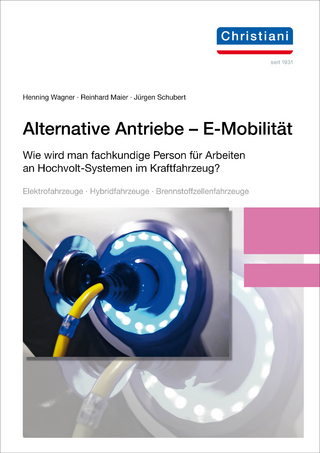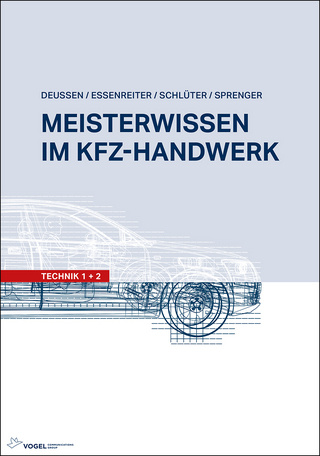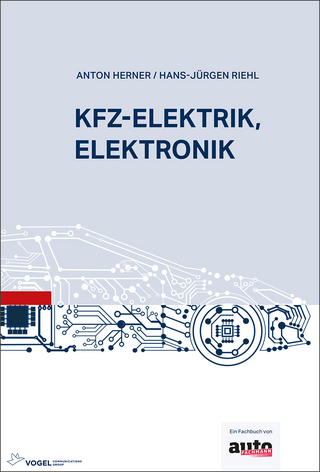
Automotive Electromagnetic Compatibility (EMC)
Springer-Verlag New York Inc.
978-1-4020-7713-5 (ISBN)
Anyone who has operated, serviced, or designed an automobile or truck in the last few years has most certainly noticed that the age of electronics in our vehicles is here! Electronic components and systems are used for everything from the traditional entertainment system to the latest in “drive by wire”, to two-way communication and navigation. The interesting fact is that the automotive industry has been based upon mechanical and materials engineering for much of its history without many of the techniques of electrical and electronic engineering. The emissions controls requirements of the 1970’s are generally recognized as the time when electronics started to make their way into the previous mechanically based systems and functions. While this revolution was going on, the electronics industry developed issues and concepts that were addressed to allow interoperation of the systems in the presence of each other and with the external environment. This included the study of electromagnetic compatibility, as systems and components started to have influence upon each other just due to their operation. EMC developed over the years, and has become a specialized area of engineering applicable to any area of systems that included electronics. Many well-understood aspects of EMC have been developed, just as many aspects of automotive systems have been developed. We are now at a point where the issues of EMC are becoming more and more integrated into the automotive industry.
Preface. 1: What is EMC. 1.1. Background. 1.2. Technology and EMC. 1.3. Communication Technology Evolution. 1.4. Convergence of Technology and Automotive Systems. 1.5. Future Trends. 2: System Level Issues. 2.1. Definition of Component and System. 2.2. Significance to EMC. 3: Power and Signal Return. 3.1. Introduction. 3.2. Current Path. 3.3. Safety Grounding. 3.4. Single Point Ground (Single Reference). 4: Basic Concepts Used in EMC. 4.1. Antennas. 4.2. Omni-Directional Antennas. 4.3. Other components in EMC. 4.4. Ideal and Actual Components. 4.5. Transmission Lines. 4.6. Shields. 4.7. Fourier series and Frequency Spectrum Envelope. 4.8. Capacitors, Inductors, and Actual Properties. 4.9. Filtering Overview. 4.10. Enclosure Shielding. 4.11. Shield Discontinuities. 5: Electromagnetic Fields. 5.1. Introduction. 5.2. Characteristics of the Electromagnetic Environment. 5.3. Comparison of Circuit Theory with EM Field Theory. 5.4. Maxwell's equations. 5.5. Regions Around a Source: 5.6. Polarization. 6: EMC Testing. 6.1. EMC Disciplines. 6.2. Radiated Emissions Diagnostics. 6.3. How a Switching Transient Occurs. 6.4. Test Methods. 6.5. Analysis of Results. 6.6. Coaxial Cables. 6.7. A 'Virtual' Tour of AN EMC Lab. 7: EMC Modeling. 7.1. The Value of EMC Modeling. 7.2. Emissions modeling. 7.3. Goal of modeling. 8: Effects of Cable and Harnessing. 8.1. Conducted emissions and immunity. 8.2. Auto Industry EMC Approaches. 8.3. Filter Placement. 8.4. Coupling between wires. 8.5. Grounding and PCB layout. 8.6. Ferrites. 8.7. Attenuating Common Mode Currents on Unshielded Cables. 8.8. Higher-Frequency Emissions. 9: Automobile Electrical/Electronics Systems. 9.1. Vehicle Generated Radiated Emissions. 9.2. Bandwidth Relates to 'Selectivity'. 9.3. Broadband Noise. 9.4. Narrowband noise. 9.5. Signal Characteristics. 9.6. RE Differences Between 'Identical' Components. 9.7. Vehicle radiated emissions test. 9.8. Summary. 9.9. Digital System Design. 9.10. Electromagnetic Environment. 9.11. EMC Issue: Immunity to External Fields. 9.12. Inexpensive shielding methods. 9.13. EMC Design for Immunity. 9.14. Immunity Threshold. 9.15. Auto Industry 'Best Practices'. 9.16. Ignition Systems. 10: EMC Rules and Regulations. 10.1. Introduction. 10.2. Radiated Emissions Requirements. 10.3. Governmental Requirements. 10.4. FCC Part 15. 10.5. 'Microvolts per Meter' and Watts. 11: Vehicle System Electrical Transients. 11.1. Background. 11.2. Overview of the Vehicle Transient Environment. 11.3. Component Selection. 11.4. Logic Families and dV/dt. 11.5. Logic Families and dI/dt. 11.6.
| Zusatzinfo | 98 Illustrations, black and white; XIV, 295 p. 98 illus. |
|---|---|
| Verlagsort | New York, NY |
| Sprache | englisch |
| Maße | 155 x 235 mm |
| Gewicht | 700 g |
| Themenwelt | Sachbuch/Ratgeber ► Natur / Technik ► Fahrzeuge / Flugzeuge / Schiffe |
| Technik ► Elektrotechnik / Energietechnik | |
| Technik ► Maschinenbau | |
| ISBN-10 | 1-4020-7713-0 / 1402077130 |
| ISBN-13 | 978-1-4020-7713-5 / 9781402077135 |
| Zustand | Neuware |
| Haben Sie eine Frage zum Produkt? |
aus dem Bereich


